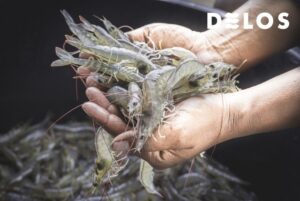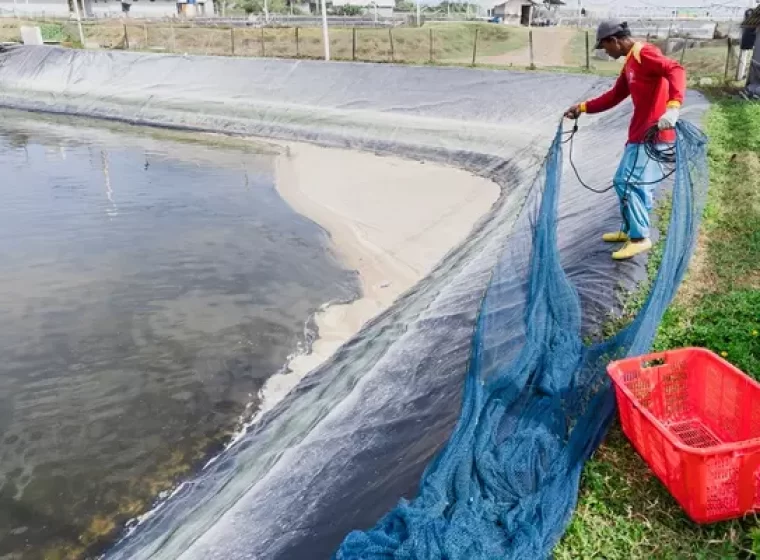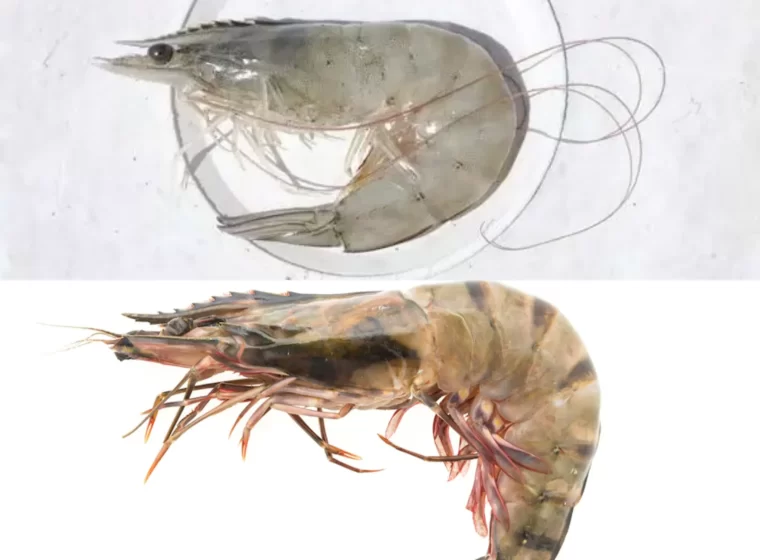
In shrimp farming, the survival rate of shrimp is a critical parameter that determines the success of cultivation. However, various complex factors can influence the shrimp’s survival, including environmental conditions, cultivation management, and the shrimp’s health.
These complex factors often pose challenges for farmers in achieving maximum cultivation results. So, what are these factors?
Also Read: Impact of Rainy Season on Shrimp Pond Sustainability
Factors Affecting Shrimp Survival Rate
1. Pond Water Quality
Good water quality is the primary foundation for ensuring shrimp survival rates. Parameters like temperature, salinity, dissolved oxygen, and pH play vital roles. Significant fluctuations in these parameters can cause stress in shrimp, increase susceptibility to diseases, and ultimately reduce survival rates.
Managing water quality requires careful monitoring and appropriate adjustments to maintain an optimal environment for shrimp growth.
2. Feed Quality
High-quality feed is key to optimal shrimp growth. Imbalanced nutrition or contaminated feed can harm shrimp’s health and reduce their survival rates. Strict supervision of feed type, quality, and frequency is crucial to maintaining shrimp health.
3. Effective Pond Environmental Management
Effective environmental management involves controlling natural shrimp predators and regulating population density in ponds. Excessive population density can increase competition, stress, and the risk of disease transmission among shrimp. Proper placement of protective structures and the right cultivation patterns are essential factors in successful environmental management.
Also Read: Vannamei Shrimp Feed Management Tips for Your Anti-Loss Cultivation!
4. Maintaining Shrimp Health
Shrimp health is another key factor affecting survival rates. Diseases, pathogen infections, or other health disorders can significantly impact shrimp survival.
Good biosecurity practices, routine health checks, and disease prevention measures greatly contribute to maintaining shrimp health.
5. Influence of Weather Conditions
Extreme and unexpected weather conditions have a significant impact on shrimp cultivation. Rapid temperature changes, storms, and high rainfall can affect pond water quality, which in the longer term can trigger shrimp diseases.
Also Read: The Efficiency of Vannamei Shrimp FCR for Successful Cultivation
Vannamei Shrimp Cultivation is More Productive with DELOS!
By gaining a deeper understanding of the factors influencing shrimp survival rates, farmers can become more vigilant and responsive. However, shrimp survival rates still adapt to field conditions during cultivation due to many other influencing factors. Therefore, farmers still need to practice proper and correct shrimp farming techniques to achieve high productivity.
Now, you can entrust the management of your vannamei shrimp cultivation to DELOS! DELOS is a science, technology, and best operational management-based aquatech startup that can help you manage shrimp ponds based on aquaculture best practices for optimal productivity.
DELOS farm management is directly integrated with AquaHero to facilitate easy monitoring of pond conditions anywhere, anytime.
Contact the DELOS team via contact@delosaqua.com or submit your inquiries about vannamei shrimp cultivation through the contact column on our website at www.delosaqua.com to partner with us. Choose DELOS for your vannamei shrimp cultivation!




